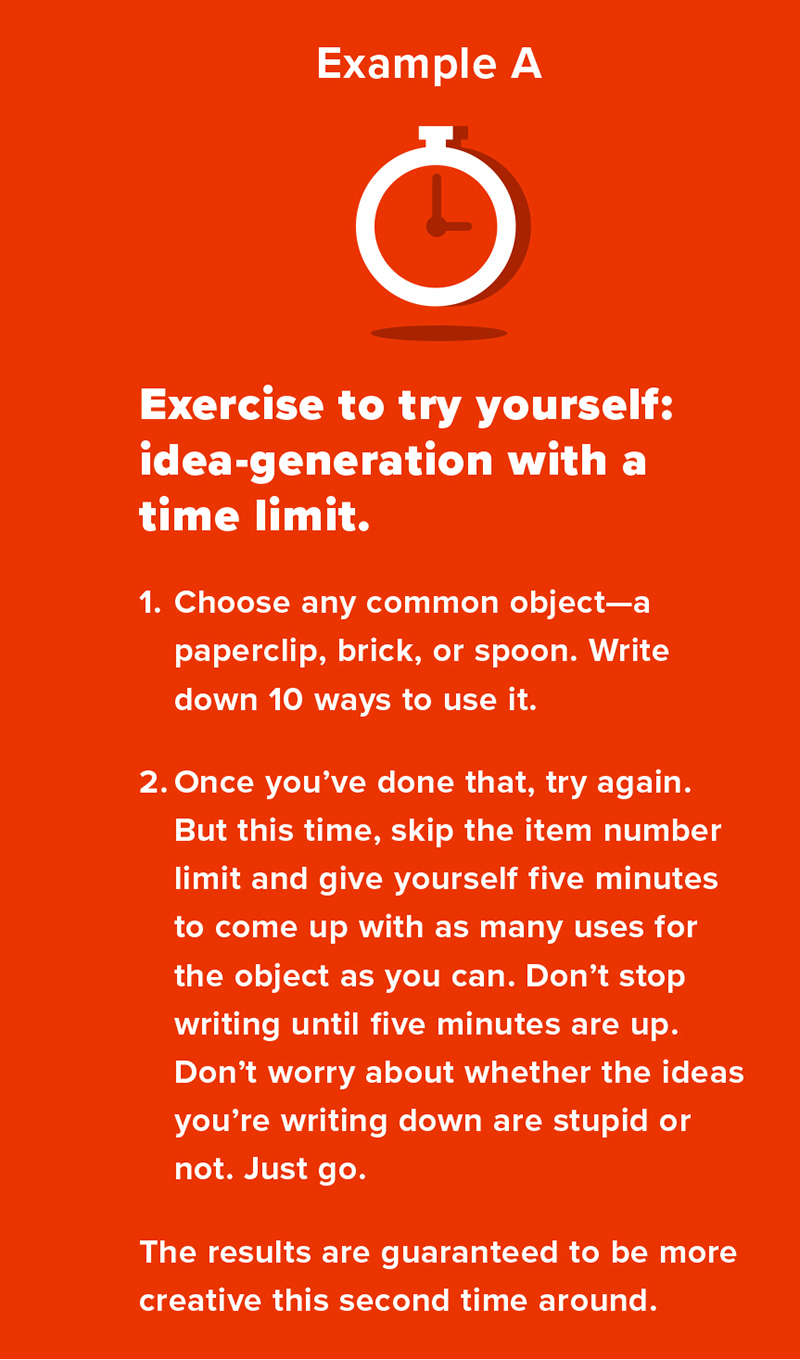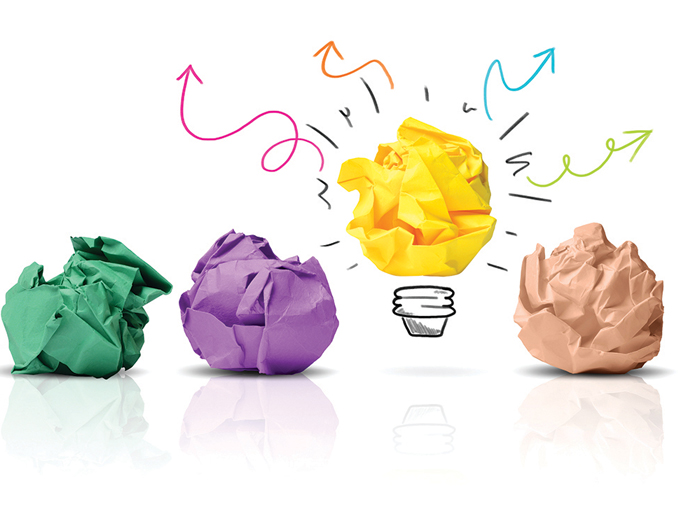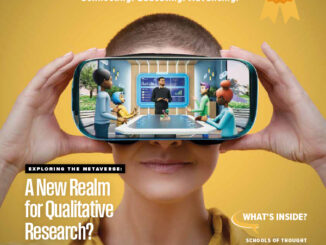
By Renee Hopkins, Qualitative Research Manager—Insights and Innovation, Decision Analyst, Arlington, Texas, rhopkin@decisionanalyst.com
When I tell people I lead ideation projects and work with creative consumers, the most common response (other than “That sounds fun!”) is, “I wish I were more creative.” But it’s hard to know where to start. Especially when the most common advice for thinking more creatively is learning to “think outside the box.”
“Learning to think outside the box” is as vague an instruction as “become more creative.” Out-of-the-box thinking is quite overrated, in my experience. It is also one of the most tired clichés in the English language.
But learning to become more creative in meaningful, useful ways is possible. The good news is that you don’t have to be inspired, channel your inner child, take up a musical instrument, or listen to TED talks to become more creative. Of course, those activities have value on their own, but they are, at best, a circuitous route to boosting your creativity.
A more direct route to becoming more creative is understanding what creativity is, the conditions under which it happens, and how to make it happen. Then you can deliberately practice creativity to add value to your business—and your life.
What Is Creativity?
Let’s start with identifying “creativity.” First, it’s more helpful to think of creativity as a process with an end result rather than a thing on its own or a personality attribute. More specifically, creativity is a divergent process—the goal is to create a large number of ideas. The opposite of divergence is convergence, where the goal is to evaluate and eliminate, hopefully using some sort of evaluation criteria. The first rule of thumb in creativity is to keep convergence and divergence separate. Don’t evaluate while you’re creating.
Most people are probably more familiar with artistic creativity—where the end result of the creative process is a work of music, visual art, design, etc. A creative process that results in ideas rather than paintings or songs is what we at Decision Analyst call “idea-centric creativity.” When we evaluate people for our Imaginators panel of creative consumers, we look for this ability to create ideas. While our evaluation methods are proprietary, the research on which we base our idea-centric approach to creativity is not. There’s not a “secret handshake” here—anyone can learn what creativity is and learn how to develop creativity skills that will allow them to come up with more and better ideas.
Notice I didn’t say “acquire”—I said, “develop.” We are all born with some level of creativity skills. Small children are most often incredibly creative, but creativity skills tend to erode a bit as we age, partly because creativity is often not prioritized in school curricula—or in life, for that matter. However, it’s never too late to become more creative!
Let’s start with a close look at the science behind creativity. Paul Torrance did some of the most well-known and well-respected research on creativity and used that research to develop the Torrance Test of Creativity. You can find the Torrance Test online1 if you are curious. The test presents various prompts (stimuli) that require a creative response, which is then evaluated according to Torrance’s definition of what constitutes creativity:
- Fluency—the total number of interpretable, meaningful, and relevant ideas generated in response to the stimulus
- Flexibility—the number of distinct categories of relevant responses
- Originality—the statistical rarity of the responses
- Elaboration—the amount of detail in the responses
The greater the extent to which a person’s answers display these attributes, the better their creative skills. Again, we are talking about idea-centric creativity—the ability to come up with lots of ideas. The Torrance Test doesn’t evaluate artistic creativity.
Increasing our ability to be fluent, flexible, original, and elaborate will help us come up with more and better ideas. Add to that the ability to build on your own and others’ ideas and to iterate, and you will have an impressive set of creativity skills. Here’s how you can learn and improve those skills.
Elaboration: Say More
Elaboration makes the difference between saying, “I had a bad day,” and “I had a bad day because the power went out and I lost all my work, and then the dog threw up on my shoes and chased the cat around, so that she knocked my favorite vase off the fireplace mantel, and it shattered when it hit the bricks on the hearth.”
We know this one already because, as qualitative researchers, we are used to saying, “Tell me more about that.” That is often all you need to do to prompt yourself to elaborate.
Let’s say you want to improve your yard. Let’s also say you don’t know much about plants, gardening, or yards. You could say, “I want to keep the hillside from eroding. I want it to look nice.”
But you do have ideas for how you want to use your yard. So, you could say, “I want to be able to walk down to the bottom of this hillside, where I can sit and relax with my morning coffee and look at some flowers. A mix of flowers of all heights and colors would be pretty. I’d like it to smell nice, so maybe also some rosemary and lavender. I want to be able to see in the dark so I can use the patio at night, too.”
Note that this elaboration requires no expert knowledge about plants or landscaping skills. It simply adds context and story. It allows the landscaper to use their skills to follow through on your ideas.
Elaboration sows the seeds from which ideas grow. Creativity thrives when lots of seeds are planted.
Fluency: Resist Closure
An often-seen creativity prompt is “Come up with a list of 10 ideas for how to use a common household object.” Unfortunately, it’s likely to result in 10 extremely common ideas. To become more fluent—to create more and better ideas—keep going.
Fluency is an important creativity skill to master because the ideas you come up with last will be more creative than the first ones. Psychologists call this the “serial order effect”—later responses to a divergent thinking task tend to be more original than earlier ones.
Coming up with more ideas also allows you to get past the most common ideas, which are at the top of your mind. Get those out first—if you stop too soon, you risk stopping before you get to the most creative ideas.
A better approach is to give yourself both freedom and a limit. The prompt, “come up with as many ideas as you can for using a common household object,” frees you to write down any idea, no matter how weird or impossible. This allows you to come up with more ideas more quickly (divergence) without stopping to judge yourself (convergence).
The limit focuses you. A time limit works better than an item number limit because you want your entire brain working on coming up with new ideas, not counting the ones you already have. A time limit is a great way to focus, especially for those who do their best work when staring down a deadline. See Example A to try this exercise yourself.

Flexibility and Originality: Change the Tracks Underneath the Train
Our brains are perfectly capable of creating new ideas, but that’s not the brain’s main function. Human brains thrive on pattern and routine, not novelty. Imagine how much more complex and time-consuming your life would be if you did everything in a new way every single day. We function effectively and efficiently because our brains run on the tracks that have been built up over years of doing the same things in the same way.
According to creativity researcher Edward de Bono, meaningful creativity comes when the brain is forced to operate in ways that do not follow its natural patterns. When we consciously break our habitual thought patterns, we can be more creative.
When we talk about innate creativity or out-of-the-box thinking, often we are referring to someone who easily switches their brain away from their routine patterns and toward more original and flexible ways of thinking. However, we can all consciously make our brains jump the tracks in a way that allows us to be more creative.
Here’s where out-of-the-box thinking goes off the rails: Let’s say you gather some really creative people for a brainstorming session. Everyone agrees to follow the rules of brainstorming: think out of the box; anything goes; suspend evaluation and judgment; build on each other’s ideas.
You tell the group to come up with as many ideas as they can about the topic. The session is great fun, and ideas are popping like popcorn. Then everyone leaves, and you look through the sticky notes and flip charts. You throw out some that are not very creative and then discover that most of the rest are very creative but not on-topic enough to be usable. What went wrong?
When you run a brainstorming project with vague prompts like “think outside the box” without setting any limits to focus the creative effort, you’ll have fun but may not get many ideas you can use. That’s like breaking the brain’s habitual thought patterns—derailing it from its usual track—and then just letting it steam ahead with no destination or purpose.
What works better is to move the brain off its usual track and onto a track leading in the direction you want it to go. You do this by consciously designing prompts that will encourage flexible and original ideas in the areas where you need the ideas.
Prompts: Lay New Track
Imagine that individual ideas are molecules of water. Out-of-the-box thinking results in a layer of water spread out over a large area but only an inch deep. A more directed approach to creative brainstorming results in something more like a water well—a lot of creative ideas in a specific area that go very deep. If you need ideas in a specific area, you need prompts that direct your creativity efforts there.
Recall that the Torrance Test results are evaluated “in response to a stimulus”—the stimulus, or prompt, helps both foster and direct the resulting creativity. The prompts are the rails you switch your brain to after you manage to loosen it from its habitual tracks. You don’t derail your brain—you redirect it, so you can use its power to create new ideas.
So, how do you deliberately push your brain off its habitual tracks?
This is where some of the vaguer advice on how to be creative comes in. Travel to new places, take a class, connect with creative people and people who are different from you, play with toys, or draw. Adopt a beginner’s mind. Become an expert.
To be honest, none of this is bad advice. Anything that helps you see the world differently can help you be more creative. I would call them indirect approaches to becoming more creative. Adopting these kinds of behaviors can prepare you for more directed creativity efforts.
Directed creativity means using prompts and ideation exercises to push your brain out of its normal patterns. A quick way to do this is to force an association that won’t make sense to your logical brain. Instead of saying, “take five minutes to come up with as many ways as you can think of to use a paperclip,” you might say, “take five minutes to come up with as many ways as you can to use a paperclip to get a cat out of a tree.” Now, you’ve moved your brain off its track and given it a new track to run on. You’ve also given your brain permission to suspend logical roadblocks, such as gravity. If you need to get your cat out of a tree and you only have a paperclip to do it with—you’re good to go.
You can create prompts that result in more creative ideas by using language that doesn’t box you in. This should be a familiar concept for qualitative researchers. Here are some examples:
- “How might we/in what ways might we?” instead of “How do we?”
- “Yes, and” instead of “No, but”
- “What does/how do?” instead of “Why?”
- “Can you say more about that?”
- “What would make this better for you?” instead of “How can you improve this?”
In general, questions that promote making associations prompt creativity.
SCAMPER is one of the easiest and most powerful techniques for pushing your brain out of its habitual patterns. This technique was developed in the 1950s by advertising executive Alex Osborn, who is credited with creating brainstorming. See Example B.
Idea-Building and Iterating: Creative Superpowers
I would argue that, as much as the world needs new ideas, there’s a greater need for people who can build on others’ ideas. For example, some of the greatest achievements of Steve Jobs and his team at Apple were not original ideas but masterful build-ons and iterations of existing ideas.
Apple was late to the smartphone party—cell phones that could access the internet and applications such as mobile payment already existed, as did smartphones with styluses and physical keyboards, such as the Blackberry. The LG Prada had a touchscreen, digital camera, and video functionality in 2006.
However, the iPhone, introduced in 2007, was the first smartphone that could be navigated without a stylus, keyboard, or keypad. Instead, the user could navigate the phone using multitouch gestures such as pinching to zoom in or out. Not only was this easier, but it also allowed for more functionality to be added to the phone. This build on the smartphone idea changed how smartphones work and was widely adopted by others.
The iPhone’s easy navigation allowed Apple to iterate by adding the App Store in mid-2008—more than a year after the phone was introduced. You iterate an idea by “resisting closure,” which gives you the freedom to recreate an idea or concept in ways that are better or different, or both. Apple didn’t consider the iPhone a sacred idea that couldn’t be improved. The App Store improved the iPhone in a major way by making it easier to get apps onto your phone. At the same time, opening the iOS operating system to third-party developers vastly increased the number and type of smartphone apps available.
The App Store was not an original idea, either—it was an iteration of the iTunes Store that allowed iPod users to purchase MP3s and audiobooks easily. Combining the iPhone and the App Store changed the entire smartphone industry and gave Apple a lead it has never completely relinquished.
The SCAMPER technique mentioned above makes a great method for idea-building and iteration. You can also use SCAMPER to take an idea that isn’t actionable, irrelevant, or just not workable as-is and build on it to make it actionable, relevant, or workable.
Thinking creatively means letting go of your darlings. Don’t become so attached to your own ideas that you have trouble building on them or letting others do so.
Creativity Is Not a Mystery
As you can see, creativity isn’t mysterious. It’s a complex process with lots of facets and lots of possibilities. But, most importantly, it’s not a club that you’re born into or need a secret handshake or special invitation to join. It’s a set of thinking skills that can be learned and practiced that can boost your career and help make your life better.
To get you going, here are more creativity resources.
Learn more about creativity:
- Check out the Creative Problem-Solving Institute (CPSI). At CPSI, you learn the Osborn-Parnes Creative Problem-Solving Process framework and the many iterations that have been made over the years. CPSI is also just plain fun!
- IDEO, a well-known design and innovation company that popularized the design thinking process, offers courses in creativity, leadership, and design thinking.
- Coursera, Udemy, Skillshare, Masterclass, EdX, and LinkedIn Learning all offer online courses in creativity.
- Take an improv class—the “yes, and” framework of improv promotes flexible thinking, and the entire point of improv is building on each other’s ideas.
Find activities that push your mind off its habitual track and offer the opportunity to make new connections:
- Hobbies that allow you to create something new, e.g., cooking, baking, crafting, party planning, writing.
- Hobbies that allow you to role-play, e.g., acting, cosplay (costume play).
Use creative thinking skills in common situations that involve problem-solving, e.g., car and/or home repairs, home DIY and remodeling projects, or raising children. Life, in general, is just a series of problem-solving opportunities!
These will start you down the path to developing your creativity. Keep building these skills, and you’ll be able to be creative directly and deliberately, with no inspiration required. Now, go have some fun creating and challenging others to think more creatively, too!
Reference
- Torrance Center for Creativity and Talent Development https://coe.uga.edu/directory/torrance-center





